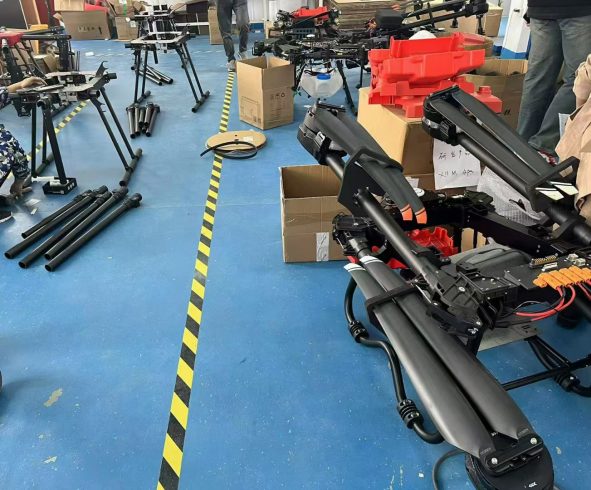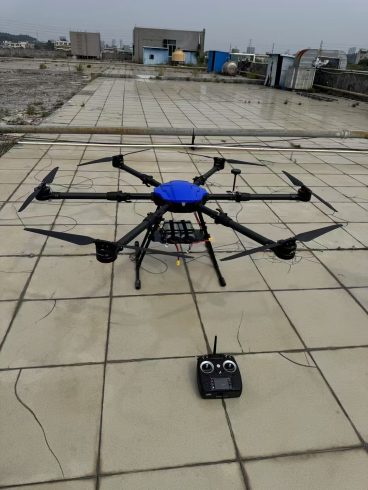![图片[1]-Drone Sprayer Nozzle Types Explained: Choosing the Right Tool for Precision Agriculture-msoen](https://www.msoen.com/wp-content/uploads/2025/04/3ea0601715184639-1024x768.jpg)
The nozzle is the unsung hero of agricultural drone sprayers. While drones and software often steal the spotlight, the nozzle determines how effectively chemicals are delivered to crops—impacting coverage, drift control, and resource efficiency. With multiple nozzle types available, selecting the right one is critical for optimizing spray operations. This article breaks down the most common drone sprayer nozzles, their applications, and how to choose the best fit for your farming needs.
Why Nozzle Selection Matters
Nozzles influence three key aspects of drone spraying:
- Droplet Size: Affects drift risk, evaporation, and canopy penetration.
- Spray Pattern: Determines uniformity and overlap between swaths.
- Flow Rate: Impacts chemical usage and operational speed.
Choosing the wrong nozzle can waste chemicals, damage crops, or leave pests untreated.
Common Drone Sprayer Nozzle Types
- Hollow Cone Nozzles
- Design: Creates a circular spray pattern with a hollow center, producing fine to medium droplets (50–200 microns).
- Best For: Fungicides and insecticides requiring full canopy penetration (e.g., dense orchards, vineyards).
- Pros: Excellent coverage in thick foliage; ideal for systemic chemicals.
- Cons: Higher drift risk due to smaller droplets.
- Flat Fan Nozzles
- Design: Produces a flat, fan-shaped spray pattern with medium droplets (200–400 microns).
- Best For: Herbicides and pre-emergent applications in row crops (e.g., corn, soybeans).
- Pros: Uniform coverage; low overlap requirements (30–50%).
- Cons: Less effective on uneven terrain or dense crops.
- Air-Induction (AI) Nozzles
- Design: Mixes air with liquid to create larger, air-filled droplets (400–600 microns).
- Best For: Windy conditions or volatile herbicides prone to drift.
- Pros: Reduces drift by up to 90%; minimizes evaporation.
- Cons: Limited canopy penetration; higher flow rates required.
- Adjustable Nozzles
- Design: Allows manual or automated adjustment of droplet size and spray angle.
- Best For: Multi-crop farms or variable-rate applications.
- Pros: Flexibility to adapt to different chemicals and field conditions.
- Cons: Higher cost; requires frequent calibration.
- Rotary Nozzles (Spinning Discs)
- Design: Uses centrifugal force from a spinning disc to generate uniform droplets (100–500 microns).
- Best For: High-viscosity liquids like fertilizers or organic biopesticides.
- Pros: Consistent droplet size; clog-resistant.
- Cons: Limited to low-pressure systems.
Factors to Consider When Selecting a Nozzle
- Chemical Type
- Herbicides: Require coarse droplets (AI nozzles) to minimize drift.
- Fungicides/Insecticides: Need fine droplets (hollow cone) for thorough coverage.
- Fertilizers: Work best with rotary nozzles to handle thick solutions.
- Crop Characteristics
- Dense Canopies (e.g., fruit trees): Hollow cone or adjustable nozzles for penetration.
- Broadacre Crops (e.g., wheat): Flat fan nozzles for uniform swaths.
- Environmental Conditions
- Windy Areas: Air-induction nozzles to reduce drift.
- High Temperatures: Larger droplets (AI) to counter evaporation.
- Drone Payload & Pressure
- Low-pressure drones (e.g., electric models) pair well with rotary nozzles.
- High-pressure systems (hybrid/gas drones) support flat fan or hollow cone nozzles.
Nozzle Comparison Chart
Nozzle Type Droplet Size (microns) Best Applications Key Advantages Limitations
Hollow Cone 50–200 Fungicides, dense crops Deep canopy penetration High drift risk
Flat Fan 200–400 Herbicides, row crops Uniform coverage Poor terrain adaptability
AirInduction (AI) 400–600 Windy conditions, volatile chems Drift reduction Limited penetration
Adjustable 50–600 Multiuse, variablerate Versatility High maintenance
Rotary (Spinning Disc) 100–500 Fertilizers, biopesticides Clog resistance Limited to low pressure
Maintenance Tips for Drone Nozzles
- Clean Regularly: Flush with water after each use to prevent chemical buildup.
- Check for Wear: Replace nozzles showing erosion or inconsistent spray patterns.
- Calibrate Annually: Ensure flow rates match manufacturer specifications.
- Store Properly: Keep nozzles in protective cases to avoid damage.
Future Trends in Nozzle Technology
- Smart Nozzles: IoT-enabled nozzles that auto-adjust based on real-time wind, humidity, and crop data.
- Nanotechnology Coatings: Anti-clog surfaces to extend nozzle lifespan.
- 3D-Printed Custom Nozzles: Farm-specific designs optimized for unique crop layouts.
- Pulsed Spray Systems: Reduce chemical use by pulsing sprays only when targets are detected.
Conclusion
Selecting the right drone sprayer nozzle is a science as much as an art. By matching nozzle type to your chemicals, crops, and environment, you can slash costs, boost efficacy, and meet sustainability goals. While hollow cone and flat fan nozzles remain staples, innovations like AI nozzles and smart adjustables are pushing precision agriculture to new heights.
Regular maintenance and staying updated on nozzle tech trends will ensure your drone sprayer remains a reliable partner in crop management. Remember: in precision farming, every droplet counts.











暂无评论内容